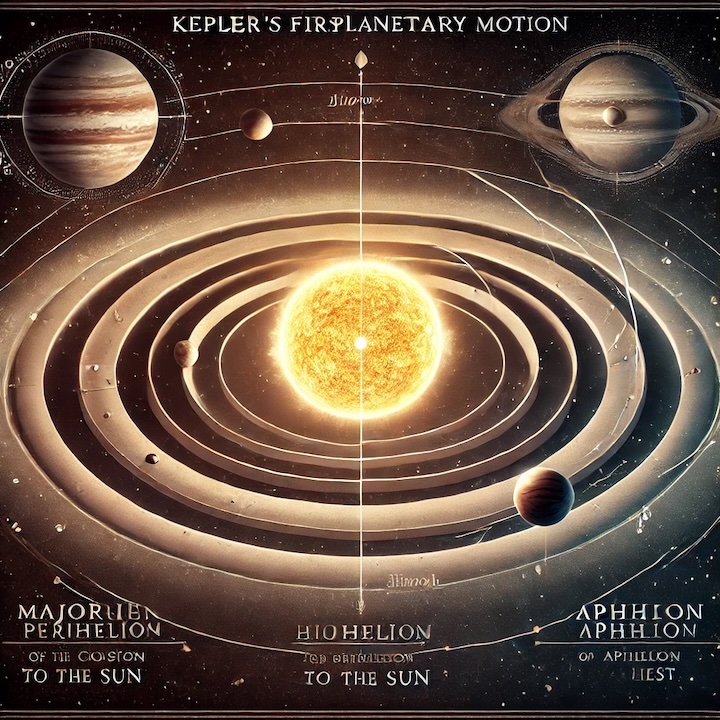
In 1609 Johannes Kepler published his first two laws of planetary motion. His laws explained the movement of planets around the sun.
In 1609, Johannes Kepler published his groundbreaking work on planetary motion, revolutionizing our understanding of the solar system. Kepler, a German astronomer and mathematician, formulated what are now known as Kepler’s first two laws of planetary motion, which explained how planets move around the Sun. These laws provided a new and more accurate model for understanding the motion of celestial bodies, laying the foundation for modern astronomy.
Kepler’s insights came at a time when the prevailing model of the cosmos was based on the ideas of the ancient Greek astronomer Ptolemy, whose geocentric (Earth-centered) model dominated astronomical thought for over a thousand years. Ptolemy’s system proposed that planets moved in circular orbits with Earth at the center, and to account for the observed irregularities in planetary motion, the model included complex constructs called epicycles. However, the Ptolemaic system, while useful, became increasingly cumbersome as astronomers discovered more anomalies that it couldn’t easily explain.
The heliocentric (Sun-centered) model, proposed by Copernicus in 1543, challenged the Ptolemaic system by placing the Sun at the center of the universe, with planets orbiting around it. However, even Copernicus’s model relied on circular orbits, which did not fully align with observed planetary movements. Kepler, using data meticulously gathered by Danish astronomer Tycho Brahe, sought to improve the Copernican system and provide a more accurate description of planetary motion.
Kepler’s first law, known as the Law of Ellipses, states that planets move in elliptical orbits with the Sun at one focus of the ellipse. This was a radical departure from the belief that planetary orbits were perfect circles. An ellipse is an elongated circle, and Kepler realized that this shape more accurately reflected the path planets took as they moved through space. This discovery was revolutionary because it explained the variations in planetary speed and distance from the Sun. Before Kepler, astronomers could not understand why planets appeared to move faster when they were closer to the Sun and slower when they were farther away. The elliptical model accounted for these changes in velocity.
Kepler’s second law, the Law of Equal Areas, further explained the motion of planets by stating that a line drawn from a planet to the Sun sweeps out equal areas in equal times. In other words, a planet moves faster when it is closer to the Sun and slower when it is farther away, but the area covered by the line between the planet and the Sun remains constant over equal intervals of time. This law provided a precise mathematical description of the variable speeds of planets, a phenomenon that had baffled astronomers for centuries.
Together, Kepler’s first two laws transformed the way we understand planetary motion. His work showed that the universe operated according to predictable, mathematical laws, and it marked a shift from a mystical, Earth-centered view of the cosmos to a more scientific, Sun-centered model. Kepler’s discoveries also paved the way for future scientists, most notably Isaac Newton, whose theory of gravitation would later provide the underlying explanation for Kepler’s laws.
In summary, the publication of Johannes Kepler’s first two laws of planetary motion in 1609 represented a major breakthrough in astronomy. His elliptical model of orbits and his law of equal areas provided a more accurate description of how planets move around the Sun, dismantling the long-held belief in circular orbits and laying the foundation for modern celestial mechanics. Kepler’s work marked a turning point in our understanding of the cosmos, helping to establish the laws of motion that govern not only our solar system but the entire universe.
 >
>